Pet Book Blog Post #3
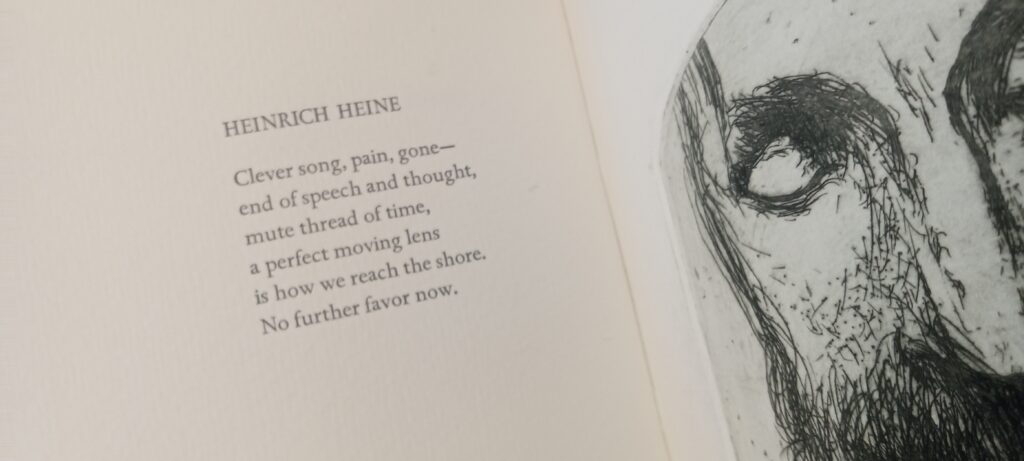
The images on Death Masks are visual representations of the dead subject. They are sketched out and then impressed on the paper. This is a relief process.
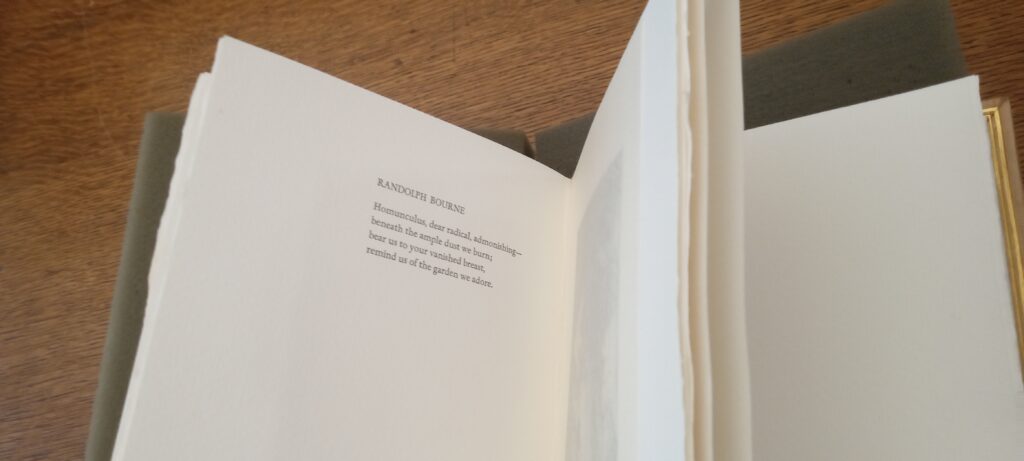
In the book Death Masks by Stuart Denenberg, and etcher, Leonard Baskin, the illustrations and the text do not cohabit on any single page. They’re separated by a veil. Between the fold, there is an unattached transparent leaf that separates the image from the word. But only the pages where the poem resides, in the verso side, are kept from touching the illustration, in the recto.
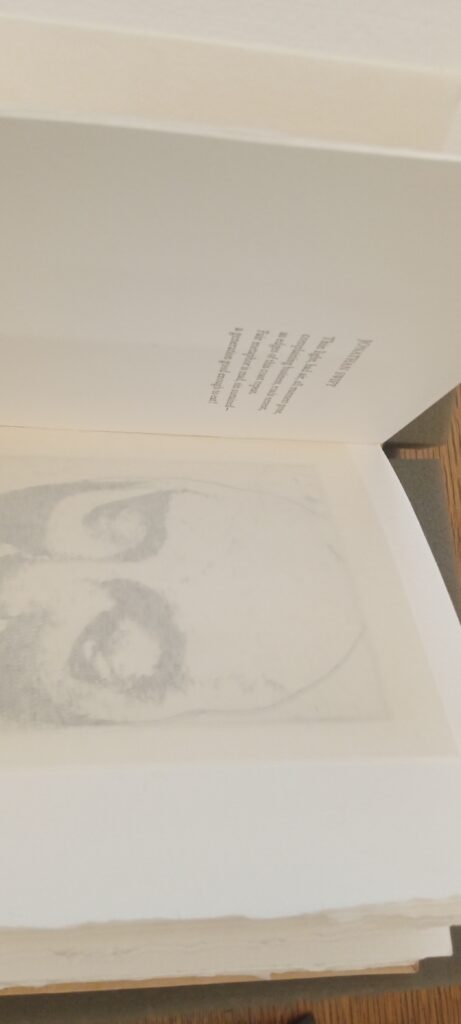
The images are the companion to the name of the poem. I don’t believe that the images vary from poem to poem. They do align with the name to whom the poem is dedicated. The text on the poem does not seem to have any effect on the details of the illustration. The size of the image on the page is not one size fits all.
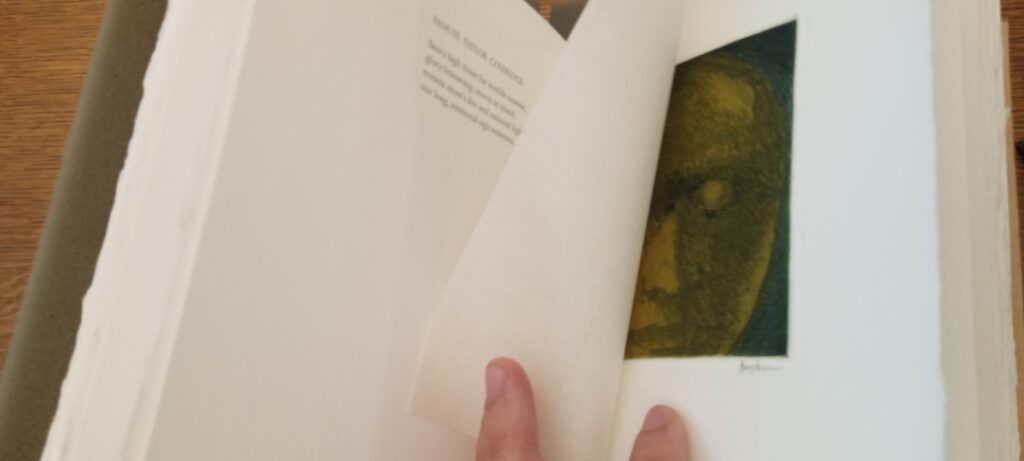
But what makes one image larger than the other? Why are some images depicted in bright colors, others in gray, even overcast type of fogginess? After reading the poems that accompany the smaller images, then reading the poems of the larger images, I do not find any coordination for size.
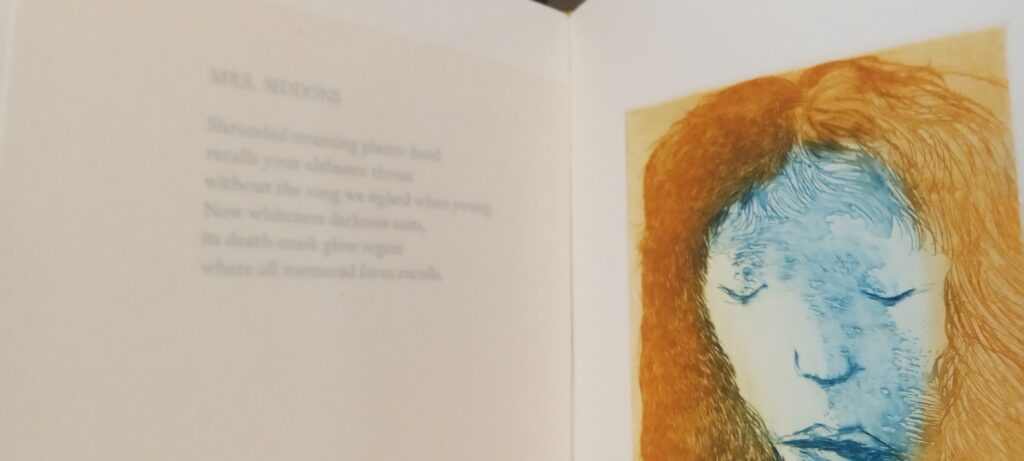
I investigate the pages where color is so beautifully rendered on the image, but there is no link there that wouldn’t be in the monochrome images. They’re all dead. Everyone of the subjects is dead and soon I will be too. Perhaps once I find what ties these images together I can then find the hatch to escape death once and forever.

The images are framed. They are boxed in after death. The subject is not alive and I know this mainly because of the title of the book. It is this text that suggests what is being illustrated, the dead.

I wonder if I would have interpreted the portrait the same way had I looked at it first and not seen the word. The truth is that some of these portraits do very effectively convey death. For instance the hollow eye sockets. The shape of the skull lets itself be known too. But it’s mostly in the eyes that communicate to me, nobody’s home.
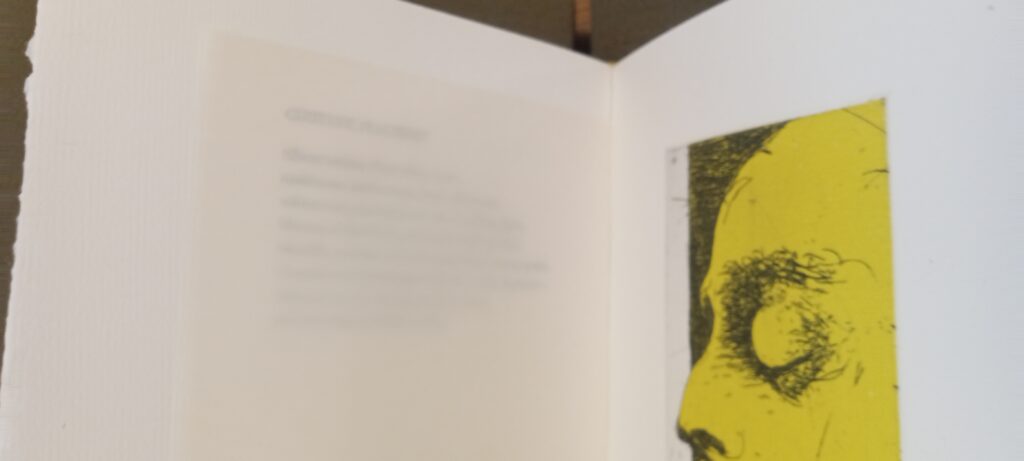
There are some other images that look like the subject is asleep. There is no indication that there is no life force within them. The subject looks like they’re resting.

Then there are these images of smiling faces. How do you take your last breath in the mood that says “Everything is fine” and then stop breathing? Perhaps, everything is in fact fine. It will all be fine. Life will go on for everyone as it always has. And maybe they have taken one last mindful breath of gratitude for having been part of this world. It is a wonderful world after all.
